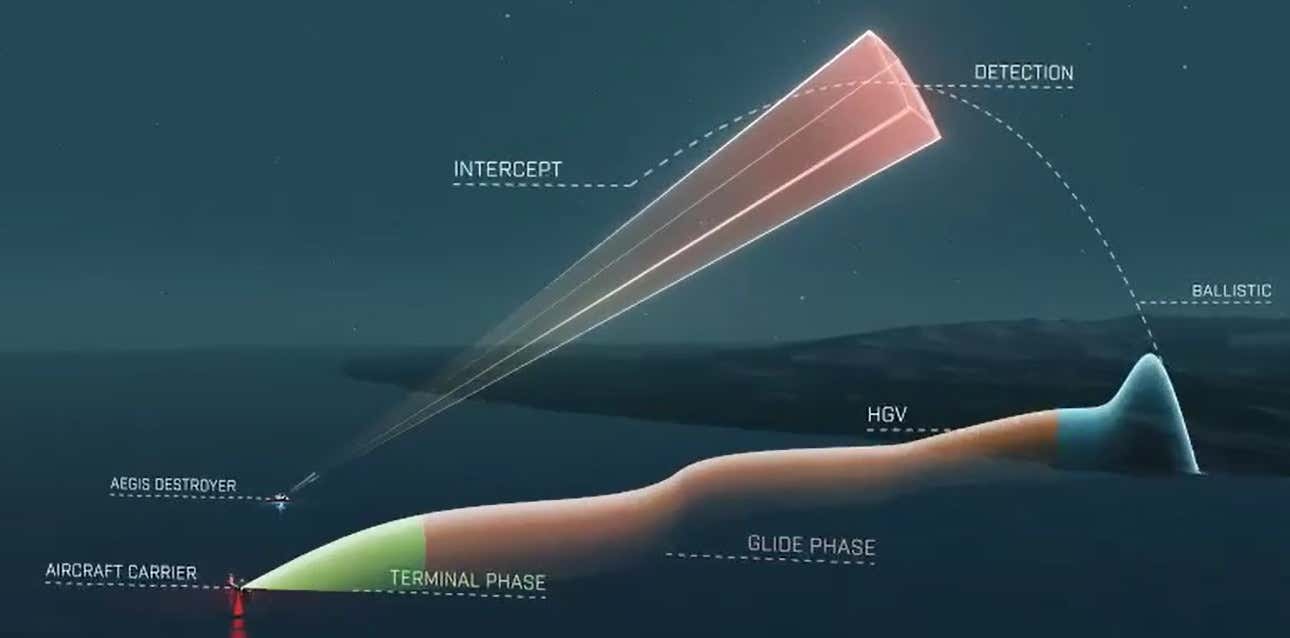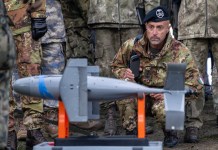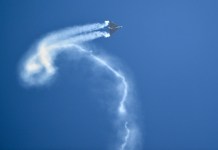The Pentagon announced on November 19 that Northrop Grumman, Lockheed Martin and Raytheon have been selected to design Glide Phase Interceptor (GPI), a missile system capable of defending the US against hypersonic missiles.
According to Missile Defense Agency’s (MDA) statement, Raytheon Missiles and Defense was granted $20.97 million, Lockheed Martin $20.94 million, and Northrop Grumman $18.95 million respectively. Each vendor must provide concept designs for prototypes by September 2022.
? #ICYMI: Missile Defense Agency selects #RaytheonDefense to develop a Glide-Phase Interceptor, the first-ever counter-hypersonic interceptor. Learn more: https://t.co/osyO25fJhW #missiledefense #GPI pic.twitter.com/jtp4DDcyYr
— Raytheon Missiles & Defense (@RaytheonDefense) November 22, 2021
The Missile Defense Agency’s budget for 2022 includes $136 million for interceptor research, development, testing, and evaluation. However, the initiative will generate billions of dollars in revenue for defense contractors in the long run.
MDA contracts Lockheed Martin, Northrop Grumman and Raytheon to develop a concept design for a new Glide Phase Interceptor.
This video shows MDA’s concept for regional defense against hypersonic glide vehicles, using the GPI. https://t.co/DM98V0v6Dt https://t.co/3OuMOPcWpr
— Simon Petersen (@SimonHoejbjerg) November 20, 2021
The interceptors would be designed to counter a hypersonic weapon during its glide phase of flight (once a missile has re-entered earth’s atmosphere and is heading toward its target), which is difficult to forecast because hypersonic missiles fly five times the speed of sound and make rapid maneuvers making their trajectory difficult to predict.
The interceptors will be built to incorporate into the current Aegis Ballistic Missile Defense destroyers in the US Navy. According to the announcement, it will be launched from its regular Vertical Launch System and connected with the Baseline 9 Aegis Weapon System, which detects, tracks, controls, and engages hypersonic threats.

MDA’s Sea-based Weapon Systems program officer, Rear Adm. Tom Druggan, said in a statement, “We are thrilled to have these contractors working with us to develop design concepts for the GPI.”
He further said, “Multiple grants enable us to execute a risk reduction phase to investigate industry solutions and exploit the benefits of a competitive environment to demonstrate the most effective and dependable Glide Phase Interceptor for regional hypersonic defense as soon as possible.”
According to a Raytheon statement released Nov. 19, the initial development phase “will focus on decreasing technical risk, rapidly creating technology, and demonstrating the capacity to intercept a hypersonic threat.”
Tay Fitzgerald, Raytheon’s vice president of strategic missile defense, said in the statement – “Raytheon Technologies systems are at the foundation of today’s ballistic missile defenses.
We’re using that information to improve the missile defense system in anticipation of future threats.” She went on to say that GPI will be the first missile built to confront this sophisticated danger due to its speed, capacity to resist tremendous heat, and mobility.
The Big Race
Lockheed Martin and Raytheon are already competing to build scramjet-powered hypersonic missiles, as part of the Air Force and DARPA’s Hypersonic Air-breathing Weapon Concept (HAWC) program.
Moreover, Lockheed is the principal systems integrator for what will be the Navy’s Conventional Prompt Strike offensive hypersonic missile and the Army’s Long Range Hypersonic Weapon. The motors for both weapons were designed by Northrop Grumman.
The Air Force’s hypersonic AGM-183A Air-launched Rapid Response Weapon is also being developed by Lockheed. When the Pentagon deemed hypersonic capabilities a priority in 2019, Northrop began a drive to build hypersonic missile capability, while Lockheed Martin began work on a new facility in Alabama that same year for designing, testing, and producing hypersonic weapons.
Current ballistic missile tracking and targeting systems were designed just for a ballistic missile flying on a highly arched trajectory that spends the majority of its time in space. In contrast, Hypersonic missiles can greatly maneuver themselves to create surprising routes.
Although these Hypersonic missiles can be tracked using the radar on the Navy’s Aegis ships and the Sea-Based X-band Radar used for terminal defense (i.e. as the missile approaches its target), this requires being in the right location at the right time.
MDA and the Space Development Agency are currently working on the Hypersonic and Ballistic Tracking Space Sensor (HBTSS) satellites in Low Earth Orbit to supplement current missile warning/tracking satellites that could lose hypersonic missiles after their boost phase.
Additionally, the SM-3 interceptor on the Aegis Ballistic Missile Defense system, as well as the Army’s Ground-Based Interceptor on the Ground-based Midcourse Defense system, is designed to kill an incoming missile in space.
Considering the high speed of hypersonic weapons, the coverage of the Navy’s terminal-phase interceptor, the SM-6, is just too low; the Army’s Theater High Altitude Area Defense (THAAD) is even shorter. MDA is already thinking about how the interceptor could be integrated into land-based missile defense systems, thus Ground-Based Interceptor intends to fill that need.
- Contact the author at ashishmichel@gmail.com
- Follow EurAsian Times on Google News




